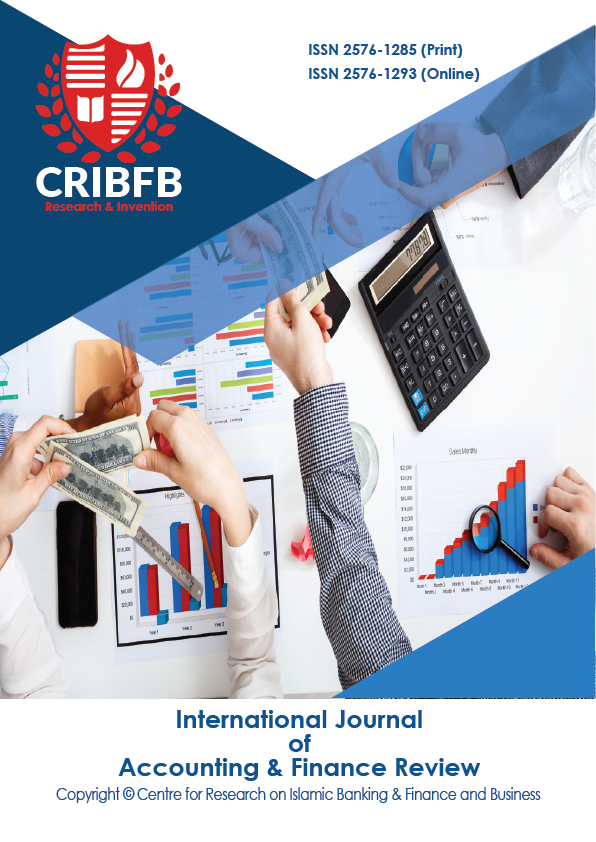A BIBLIOMETRIC ANALYSIS FOR AUDIT RESEARCH: EVIDENCE FROM ALGERIAN SCIENTIFIC JOURNALS PLATFORMS (ASJP)
Main Article Content
Abstract
Addressing the increase of auditing in the current era, this study examines hotspots in auditing, research trends, and practical core works shaping this topic in Algeria since studies have yet to be conducted on the issue according to our specific orientation. By adopting a bibliometric analysis approach and searching with the keyword ''audit'' and its synonyms by different languages in the available cell allocated to the title within the database, Data(manuscripts) were automatically collected by author names, years of publication, titles, journals, abstracts and keywords up to 31st December 2021. The study input relies on 390 papers published in The Algerian Scientific Journals Platform (ASJP) from 2008 to 2021. The findings have shown a rapid increase in the number of publications, with a peak of 84 articles in 2021. The language commonly used was Arabic in (72 %) of the papers, and researchers performed their empirical contributions in sixteen countries, but the prevailing majority was in Algeria. Furthermore, The scientific landscape of auditing within accounting research is found to be fragmented into general classes: firstly, external audit (30%), secondly, internal audit (23%), while the scientific collaboration among authors was feeble and applied at (8.05%). However, the research with a specialized audit theme must be systematically adopted and developed in Algeria.
JEL Classification Codes: M42, C55, C81.
Downloads
Article Details
Section
How to Cite
References
Baron, D. P., & Besanko, D. (1984). Regulation, Asymmetric Information, and Auditing. The RAND Journal of Economics, 15(4), 447. https://doi.org/10.2307/2555518
Behrend, J., & Eulerich, M. (2019). The Evolution of internal audit research: a bibliometric analysis of published documents (1926–2016). Accounting History Review, 29(1), 103–139. https://doi.org/10.1080/21552851.2019.1606721
Benziane, R., Laid, K. M., & Houcine, M. (2022). The Six Sigma Method: Measuring of Empirical Studies in ASJP, A Bibliometric Analysis. The Journal of Economic Integration, 10(1), 560–573. www.asjp.cerist.dz/en/downArticle/180/10/1/187292
Brown, L. M. (1964). Legal Audit. S. Cal. L. Rev., 38, 431.
Cano Rodríguez, M., & Sánchez Alegría, S. (2012). The value of audit quality in public and private companies: evidence from Spain. Journal of Management & Governance, 16(4), 683–706. https://doi.org/10.1007/s10997-011-9183-4
Carey, P., & Simnett, R. (2006). Audit Partner Tenure and Audit Quality. The Accounting Review, 81(3), 653–676. https://doi.org/10.2308/accr.2006.81.3.653
Carroll, A. B., & Beiler, G. W. (1975). Landmarks in the Evolution of the Social Audit. Academy of Management Journal, 18(3), 589–599. https://doi.org/10.2307/255687
Casterella, J. R., Jensen, K. L., & Knechel, W. R. (2006). Is Self-Regulated Peer Review Effective at Signaling Audit Quality? SSRN Electronic Journal, 84(3), 713–735. https://doi.org/10.2139/ssrn.937368
Craswell, A. T., Francis, J. R., & Taylor, S. L. (1995). Auditor brand name reputations and industry specializations. Journal of Accounting and Economics, 20(3), 297–322.
DeAngelo, L. E. (1981). Auditor independence, ‘low balling’, and disclosure regulation. Journal of Accounting and Economics, 3(2), 113–127. https://doi.org/10.1016/0165-4101(81)90009-4
Ellis, D., Barker, R., Potter, S., & Pridgeon, C. (1993). Information audits, communication audits and information mapping: A review and survey. International Journal of Information Management, 13(2), 134–151. https://doi.org/10.1016/0268-4012(93)90079-J
Fairchild, R. J. (2007). Does Audit Tenure Lead to More Fraud? A Game-Theoretic Approach. SSRN Electronic Journal. https://doi.org/10.2139/ssrn.993400
Fraser, I., & Pong, C. (2009). The future of the external audit function. Managerial Auditing Journal, 24(2), 104–113. https://doi.org/10.1108/02686900910924536
Hay, D. (2015). The frontiers of auditing research. Meditari Accountancy Research, 23(2), 158–174. https://doi.org/10.1108/MEDAR-12-2014-0062
Hopwood, A. G. (1987). The archeology of accounting systems. Accounting, Organizations and Society, 12(3), 207–234. https://doi.org/10.1016/0361-3682(87)90038-9
Lamboglia, R., Lavorato, D., Scornavacca, E., & Za, S. (2021). Exploring the relationship between audit and technology. A bibliometric analysis. Meditari Accountancy Research, 29(5), 1233–1260. https://doi.org/10.1108/MEDAR-03-2020-0836
Mahdi, S. (2011). Audit expectation gap: Concept, nature and trace. African Journal of Business Management, 5(21), 8376–8392. https://doi.org/10.5897/AJBM11.963
Napier, C. J. (2001). Accounting history and accounting progress. Accounting History, 6(2), 7–31. https://doi.org/10.1177/103237320100600202
Pizzi, S., Venturelli, A., Variale, M., & Macario, G. P. (2021). Assessing the impacts of digital transformation on internal auditing: A bibliometric analysis. Technology in Society, 67, 101738. https://doi.org/10.1016/j.techsoc.2021.101738




